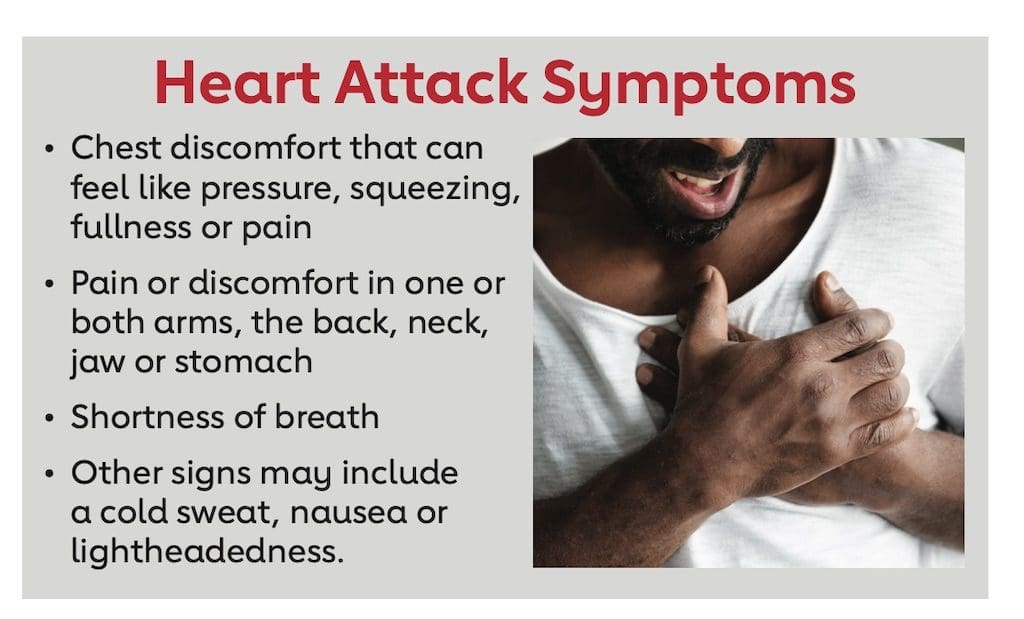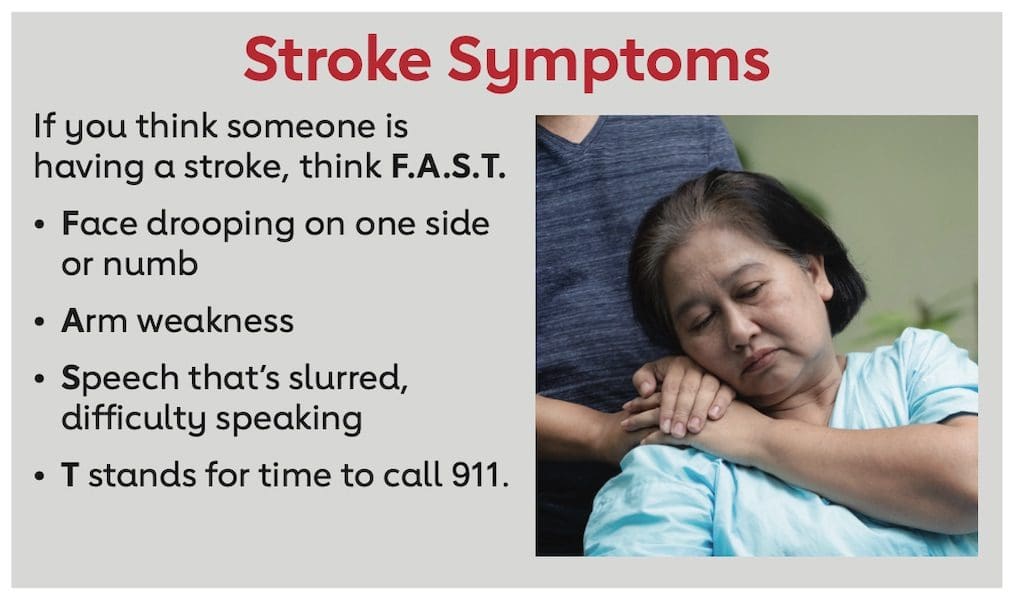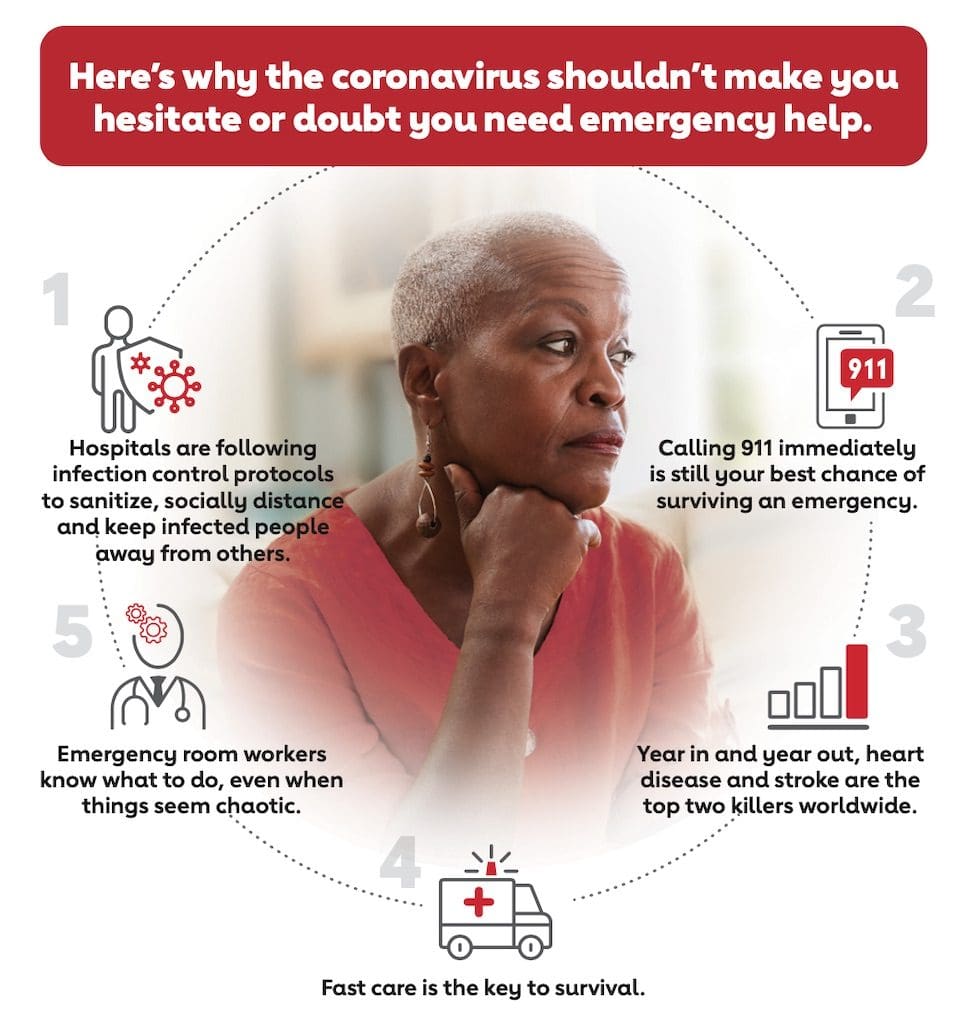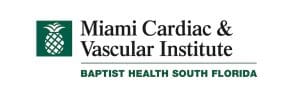The American Heart Association (AHA) has launched its “Don’t Die of Doubt” campaign to raise awareness about the signs of heart attack and stroke.
While hospitals are reportedly seeing a drop in heart attack and stroke patients, they are still the world’s leading causes of death. Recent statistics actually suggest people aren’t calling 911, or they are delaying or avoiding critical care, according to the AHA.
The AHA warns of some major symptoms not to ignore and says to call 911 immediately if you are experiencing things like chest pain; pain or discomfort in one or both arms, the back, neck, or jaw; and shortness of breath are still symptoms of a heart attack. Other possible signs include breaking out in a cold sweat, nausea or lightheadedness. Sudden face drooping, weakness in an arm or leg, or speech difficulty are stroke symptoms.


Another common myth the AHA busts is the idea that COVID-19 makes it more dangerous to be at the hospital. Although COVID-19 has changed the world, it hasn’t changed the fact that hospitals are the safest place to be if there’s a heart attack, stroke or another medical emergency even during a pandemic.
“During this uncertain time, the American Heart Association is working tirelessly to reduce the impact of COVID-19 in communities across the country by educating the public that the hospital is the safest place to receive treatment when experiencing a heart attack or stroke,” said Jennifer Campbell, Executive Director for the American Heart Association.
Doubting heart attack and stroke symptoms is the difference between life and death. The AHA offers 5 reasons why the hospital is actually the safest place to be:

- Hospitals are following infection control protocols to sanitize, socially distance and keep infected people away from others. In fact, many hospitals have separate emergency rooms, operating rooms, cardiac catheterization rooms and ICUs for people with COVID-19 and for those people suspected to have the disease. Patients are often being met by workers in full protective gear as a precaution, and family member access is restricted.
- Calling 911 immediately is still your best chance of surviving an emergency. It is SAFE for EVERYONE to call 911. It is SAFE for ANYONE to go to the hospital in an emergency. U.S. hospitals are no longer overwhelmed by COVID-19. You shouldn’t worry about the system being able to provide adequate care.
- Emergency room workers know what to do, even when things seem chaotic. Emergency rooms have made plans to ensure adequate staffing and keep patients and workers safe. This is their specialty and their strong suit; hospital workers are trained in disaster readiness and to get the job done in any situation.
- Year in and year out, heart disease and stroke are the top two killers worldwide. Someone in the U.S. will have a heart attack and someone else will have a stroke every 40 seconds. More than 350,000 out-of-hospital cardiac arrests occur in the U.S. annually. Hospitals know exactly what to do in these instances to save lives.
- Fast care is the key to survival. Minutes matter. People with blocked arteries or clots causing heart attacks or strokes need care quickly. The difference between life and death can be measured in minutes. With so little time to work with, and the extra time needed to ensure coronavirus safety measures, calling 911 quickly is more important than ever.
Locally Sponsored by

























